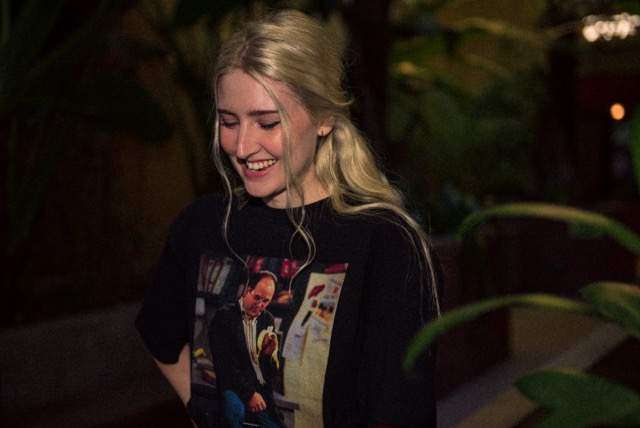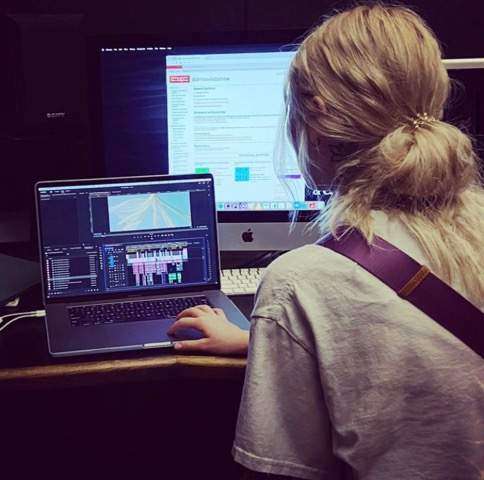
Fans of the horror film genre will tell you that what makes for the most memorable film is a unique twist on the familiar. Fans of editor Marie Lessel will tell you that she is extraordinary in her ability to deliver those precise and exact moments to productions of this genre. While her work is not limited to tales designed to deliver fright, Marie’s fierce commitment to the uniqueness of each story complements stories of this ilk extraordinarily well.
The Spirit Became Flesh (an official selection of highly regarded festivals within the horror genre such as Screamfest LA and Telluride Horror Show), American Girl (an official selection at the Oscar and BAFTA qualifying festivals LA Shorts International Film Festival and Hollyshorts 2023), and Morse Code (awarded best genre film at the First Look Festival 2022), have all been the recipient of immense praise by critics and horror fans alike.
The other common thread which they share is exceptional editing, complimentary of Marie Lessel. Remarkably inclined to seek out the individual personality and identity of the film and directors with whom she collaborates, Ms. Lessel’s work must be experienced firsthand to truly be appreciated. She is, without question, one of the most gifted editors of her generation.
A truly great horror story has a social message to it. The Spirit Became Flesh tackles the separation of rural and urban America as well as the various Christian religious factions that exist. The film follows Sam, a young man who returns to his hometown in Alabama to find that the residents have taken a deeply religious turn due to a new inhabitant of the woods that surrounds them. Marie wanted to imbue the film with a sense of the unexpected but one which differed from the “jump scare” films of this kind are so often populated with.
She describes, “When Sam goes out into the field to confront the creature in the climax of the film, determined to shoot it dead, the tone was intended initially to be horror. As the creature slowly reveals itself, coming out from the shadows, I wanted to invoke fear of the dark and the unknown, keeping the pacing slow and uncomfortable. As the creature approaches at high speed, the pace picks up again, creating a sudden jump scare, then I cut to Lilah back at the cabin, surrounded by the church members as she is having a seizure.”
“Once I cut back to the spirit, face to face with Sam, it was important to me and Jesse to create a tonal shift. Instead of the feeling of horror, we wanted a feeling of awe, like the one you might feel when meeting the holy spirit. Keeping the pacing slow, I intended to make the audience wonder what Sam was really thinking. There was a sort of inconclusive look on his face that could be fear, awe, or both. We wanted to keep that sense of uncertainty intact in the audience. It was important to leave open to interpretation whether Sam believed this was the Holy Spirit or not.”
This scene is innovative and transfixing for so many reasons. The pacing and choices made by Marie prolong the emotionally gratifying moment of fear to a nearly excruciating point, but in the most pleasing manner. In an approach that contradicts the status quo, Marie doesn’t spoon-feed the answers to the audience, leaving much to discuss after the film has ended.

Director/writer Andrea Riba sought out Marie specifically to save her film American Girl. While the majority of the footage was incredible, the ending was reshot and Andrea enlisted Ms. Lessel to steer the story back to its true north. The plot preys upon the financial instability so many small businesses navigate and the veneer of celebrity. Brought into the process late, Marie provided fresh eyes for the climactic scene of American Girl which introduces the ultimate twist.
Marie describes, “I wanted the audience to inhabit that same space as Rosario, physically and emotionally. When Rosario tries to leave the American Girl studio after winning the competition, she immediately starts to feel drowsy. Realizing she’s been drugged, she stumbles through a dark void to get back to the laundromat. I wanted this scene, the climax, to be hectic and disorienting, so I used a ton of blurring effects as well as dissolves between Rosario’s face in different positions, as well as the laundry machine she is walking towards. This helped achieve a drunk feeling, as if the world was spinning for the audience just like it was for Rosario.”
This scene and that which follows is transportive. Director Andrea Riba is noted for often proclaiming that Marie “saved the film” with her contributions.
Morse Code boast some very impressive talent in front of the camera including Dia Frampton (of Primetime Emmy Award–nominated Series Criminal Minds) as Stefani, Austin Boyce (of Primetime Emmy, Golden Globe, SAG Award-nominated and Peabody Award–winning Series Better Call Saul) as Myra, and Kristin Carey (of Primetime Emmy Award–winning series For All Mankind and Primetime Emmy Award–nominated Series Bosch) as Dr. Anna. The film tackles the topic of grief through the experiences of Stephanie and the loss of her friend Myra who committed suicide.
The premise of the story is the processing of guilt and grief as well as the connection we share with what we cannot see. Many of the moments crafted by Marie’s editing are ones which cause the character and the audience to question whether what they are experiencing is coincidence or a spiritual entity. The subtle maneuvering of our senses into that questionable place is masterfully steered by Marie (along with her editing partner Cristina Headrick).
Noting the impact the script had in convincing her to join the production team, Marie recalls, “I remember reading the re-write of the script, after McKenzi (Vanderberg-writer/director) and I had spoken about the theme of suicide, and how we wanted to handle it very seriously but with an element of hope. When I read the new draft of the script, it actually made me cry. I was so thrilled to be a part of a production with such a nuanced emotional story, all handled through my favorite genre – horror.”
Horror is one of the most prolific genres in the industry. It’s also one of the most popular and highest grossing, leading some of the brightest talent in film to create stories for fans of it. It’s not an exaggeration to say that there is likely some form of this style that appeals to everyone, regardless of how squeamish or indulgent your taste. Whatever your inclinations, an editor as creative and skilled as Marie Lessel empowers each type of horror film to be its best.
Writer : Basil Thomson